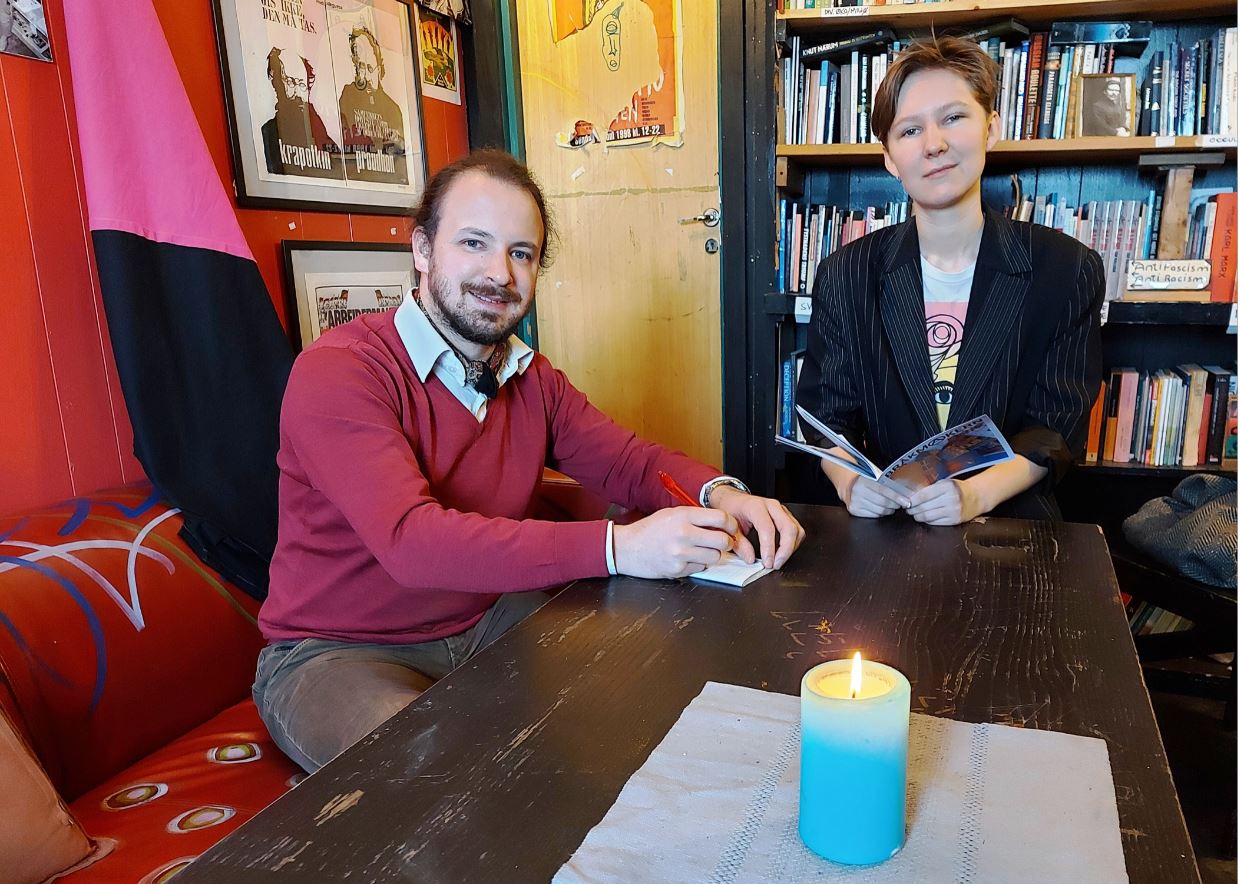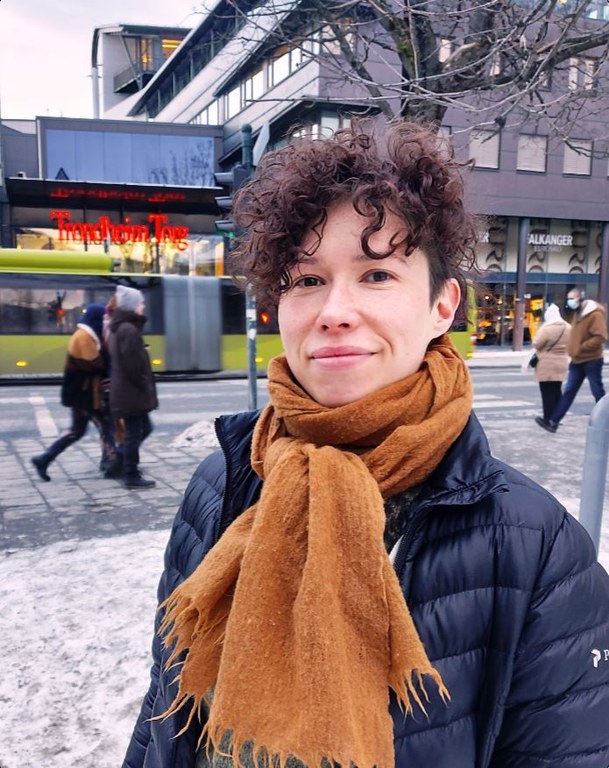What is it really like to be LGBTI in Norway today?
Norway’s LGBTI community is more exposed than ever and their living conditions should therefore be studied. So say young people in Trondheim’s gay milieu, and get support from a gender researcher.
Kaja Colin Borgersen Bojer has studied in England and experienced how some people were organising opposition to gay rights. They warn living conditions could also deteriorate in Norway, where the abbreviation LHBT is most often used.
“In academia, I experienced opposition to trans people through the publication of statements bordering on conspiracy theories. We see such tendencies in Norway too. The extreme right are very hostile. Threats to gay people’s rights are gaining a foothold in country after country,” says Bojer.
Book burning
Bojer uses the Nazis’ book burnings and the Hirschfeld Institut für Sexualwissenschaft archives around World Ward II as an example.
“The institute conducted research on sexuality and gender diversity which was important during a gay liberation fight. The Nazis wanted to get rid of this knowledge,” says Bojer, and points to today’s Poland, where the historic Nazi segregation seems to be blossoming once more.
“They have introduced ‘LHBT-free’ zones. LHBT people are not allowed to lead the lives they want in society. Attempts at curtailing their living conditions are being made in country after country, including in Russia as we know,” Bojer says. That is why they think LGBTI organisations doing their own research need support because they have important knowledge.
“Research could give us the opportunity to fight ideas like the one that LHBT people are trying to force their sexuality onto other people,” Bojer says and gets support from Eivind Rindal.
Need arenas
The two of them coordinate their activism from Ivar Matlaus Bokkafe in the Svartlamon neighbourhood in Trondheim. The alternative neighbourhood is also known for its housing activism. They want to create a common gay arena at the book café. 
Social arenas where gay people can feel OK are important. Ivar Matlaus Bokkafe at Svartlamon in Trondheim is open, points out Eivind Rindal and Kaja Colin Borgersen Bojer.
“I meet many people who miss places where they can dare to be open and express themselves. This indicates that we still have a long way to go in our society. Many invisible gay people are still out there holding themselves back and the way they want to express themselves as people,” he says.
Underground movements have always been important to young people who feel different. The need for a common arena among LGBTI people is big, and it used to be better believes Rindal.
“There used to be a more diverse milieu. Now a lot has moved online. The social fabric is about to be lost. But the feeling of togetherness is something people want,” he says. He has been working with the Trondheim Pride parade for nearly ten years.
“Many want less alienation and want to not have to think about whether they present in a ‘correct manner’ with the correct social codes. This is one of several themes it could be interesting to research,” says Rindal.
Living conditions across Norway
On commission from the Norwegian Directorate for Children, Youth and Family Affairs (Bufdir) researchers are now cooperating on a nation-wide survey. It is called “LGBTIQ living conditions 2020”. The survey is being conducted by the Department of Psychosocial Science at the University of Bergen and the Nordland Research Institute.
The last major quantitative living condition survey among LGBT people in Norway was published in 2013, says Elisabeth Stubberud. She is a researcher at the Nordland Research Institute and the Norwegian University of Science and Technology (NTNU) in Trondheim.
“In our current survey on living conditions among LHBT people, we build on the work done in 2013. We have created a set of indicators and we have some well-qualified ideas of what it is we should ask gay people. We have also looked at a larger survey of living conditions for gay people in Europe. Several of the questions used there we use in the same way and have gathered comparative numbers from a representative selection in Norway,” says Elisabeth Stubberud. The results will be published this spring.
“Pretty negative”
“We know from opinion polls that a considerable part of the population is relatively negative to gay people in general. You can expect to see this in the living condition data among gays. I still hope living conditions have improved compared to the 2013 survey. That gay people for instance feel safe enough to be open about who they are. At the same time, I am realistic,” she says.
“The recent trans debates in Norwegian media have been ugly. I think the reason is a combination of most people having very little knowledge of trans issues, while most people are very interested in genders,” she says.

Elisabeth Stubberud at NTNU in Trondheim is conducting a survey on living condition among LGBTI people across Norway on commission from Bufdir.
“We live in a culture where it is important to sort things according to gender. If something goes against the usual categories, people can become quite agitated. Some trans people embody what many in society feel to be difficult to relate to: that gender does not have to be about man or woman, but that it can rather be considered to be a spectrum.
"Trans people who participate in media debates must sadly put up with some hateful statements, perhaps because of this. I am curious to see what kind of data we get for trans people’s living conditions, as this has not been reported in a quantitative way earlier in Norway,” she says.
“I am a researcher and an activist and I believe it is possible to do something. I am also very worried. We see a backlash right now, especially in Eastern Europe, where it is not OK to be gay – for instance in Poland and Russia. The so-called ‘anti-gender movement’ has a parallel to the trans debate here at home. Those who follow this ideology have a conservative understanding of gender – that there can be nothing in between being a woman or a man,” explains Stubberud.
More research
She believes LGBT research otherwise to be rather limited.
“Some of us who are gender researchers in Norway are interested in gay theory. It was easier to get finance for research before. Several of us are interested in more gay research,” she says.
“There are still many young people who feel it is difficult to come out. Many spend years before telling family and friends anything about their sexual orientation or gender identity. It surprises me that things are still this bad. Society must realise that we still have some way to go, and show that there is space for diversity.
"Adults are responsible for not presuming their children are straight. Employees in education, health and child services are responsible for presuming that children could be gay. This concerns us all every day, and it is not something that concerns somebody else somewhere else,” Stubberud says.
She does not think there are major differences in attitude based on parents’ education or whether people live in the city or in the countryside.
“Update is needed”
Anna Bjørshol is head of department at the Norwegian Directorate for Children, Youth and Family Affairs, Bufdir, which advises the Government on policies concerning gay equality and rights.
“Research has shown that LGBTI people on average have worse living conditions than the population in general. It is for instance more common for gay people to experience psychological problems and hate crime. Although we have some knowledge, in general there is little research and other information about conditions for LGBTI people in Norway.
"The background for commissioning this survey is that we need up-to-date knowledge of how gay people experience living in Norway. This is a unique and historic survey because it is the first major and national survey on living conditions for trans people and non-binary people in Norway,” Bjørshol tells the Nordic Labour Journal.
- Housing policy for gay people
-
is one of several themes occupying Kaja Colin Borgersen Bojer and Eivind Rindal. In the picture above they are stood in front of the grey mini house where Bojer lives at Svartlamon in Trondheim.
 Follow us on Facebook
Follow us on Facebook
